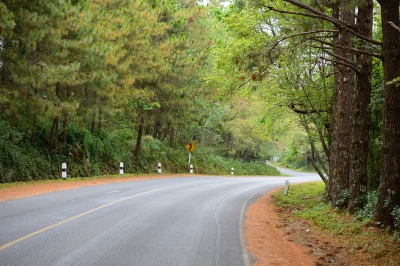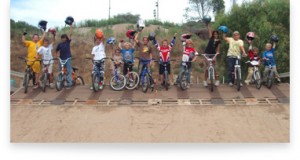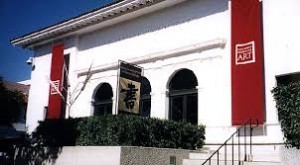
Suzanne Farwell, LaraCooper / Noozhawk photo
As Director of Communications, Suzanne Farwell is often the voice for the Santa Barbara Foundation, connecting all of us with information about the good work the foundation is doing in the community. Farwell connects with Leslie Dinaberg
to reflect on her work and her life, as she prepares to retire later this month.
Leslie Dinaberg: What will you miss the most about your job at the Santa Barbara
Foundation?
Suzanne Farwell: The people I work with. One of the reasons I like working there is because I
work with people who are passionate about what they do and helping people.
…The other thing I really like about my job is it has so many facets where I’m
gathering information, so I’m learning about many different things every day. …
I’m learning about different philanthropic groups that pop up through us. It’s the
whole canvas of interesting wonderful things that are positive. …
LD: That’s great. In many ways I think Santa Barbara Foundation seems like an
ideal nonprofit job in that you would never get bored because you’re dealing with
so many different types of things.
SF: And now there’s the added component of a new boss who is coming in (Ron
Gallo replaced Chuck Slosser as CEO this year) with fresh ideas and that’s also
very exciting.
LD: So what made you decide to retire now?
SF: Well a couple of things. The major reason is my daughter has a little boy who
is 14 months old and he is a sweetheart and I don’t get to see him much. And my
son is getting married and in every family there needs to be someone at the
center who doesn’t necessarily actually need to do anything but who is that
center and there’s much I can’t do with this job. … I hope to do some projects for
the foundation that I am intensely interested in, and I’m still young enough to be
able to open my mind to lots of other things and who knows. I’m trying to have a
fertile ground and so as things pop up they take root. But I can’t open it up
without cutting back on the work. But it seems like a good time. I’m also looking
forward to spending more time with my husband at home.
LD: I would imagine that’s its very demanding work.
SF: It is, but that’s what good about it is I use every brain cell.
LD: I know you worked on a lot of great programs while you were at the Santa
Barbara Foundation, but are there any that are particularly near and dear to your
heart?
SF: The first year I was there we were about to celebrate the Foundation’s 75th
anniversary. So there was a book, a history book for the anniversary project to
coordinate and then there was a gala performing arts presentation at the Lobero.
That was fantastic. Then there was a symposium about the future of
philanthropy. That was all in one year. That was really something. …
I think one of my favorites was a book about the blind doctor, Dr. Pearlman. … A
little old lady comes to us and she wants to leave us a million dollars part of the
deal is that we publish her manuscript. Well, you can imagine a little old lady’s
manuscript. What will we do with that? Well, you read it and it turned out to be a
really compelling human story so we shepherded that project, we got a local
publisher; the whole thing was really heartwarming. And it’s always nice to have
tangible evidence of what you’ve done because most of mine is ephemeral.
LD: I’ve seen that project and it’s very, very cool.
SF: Yes, and the idea that we would be following through on the donor’s wishes
which is always very important. And it’s a book that opens people’s eyes to what
it is like to be blind as a society, as a world society we could all that to
understand what it’s like to be in someone else’s shoes.
… It’s fascinating. I get something out of every single project. I know the
foundation’s history better than anybody.
LD: Do you have any trips planned or any immediate plans as soon as you’re
done?
SF: Everybody asks me that. … My husband and I have traveled a lot and I just
plan to stay home for a while and just be there. I live in a wonderful place. I want
to just sit on the porch, watch the birds and just still the mind a little bit because
I’m always thinking about philanthropy and this and that and it’s going to take a
while for that to go away because I’m always going at 60 miles an hour.
LD: What else do you do like to do with your spare time?
SF: Well I love to read. I’ve also been a professional dancer for 30 years and I
still do it two or three times a month. I’ve been with Chef Karim since he
started.
LD: I didn’t know that.
SF: So that’s in my blood. And I love to move, so it would be fun to explore
different forms of dance. I don’t know it’s mainly a stilling of the mind to allow
other things to come up. It sounds like I’m not going to do anything.
LD: You need a break, that’s what it sounds like to me.
SF: So I’m opening doors and letting things in.
LD: How did you get started with belly dancing?
SF: My husband and I were living at Married Student Housing at UCSB because
we were both graduate students. I was getting my masters in French and he was
getting a PhD in counseling psych and a woman moved in who was a belly
dancer, new to town. He was dabbling in photography at the time, she needed
photos, so they made a deal. He said I’ll take photos of you and why don’t you
give Suzanne some lessons. I was very annoyed. I was not consulted. I was
almost insulted.
So I went and I took a couple of lessons and said this is really weird. But then my
teacher put on a show with three other dancers and I went and I was hit in the
head by a bat. That proverbial light bulb was like, ah, that’s what I want. Yes. I
want to be that person on the stage. Because it’s so alluring and beautiful and
that was it I set on a path and my poor husband never imagined that this would
happen. And it became overwhelming. It changed my life because I learned to
relate to people in a different way. I was very British at the time, very shy and I
learned to handle myself. I did Belly Grams for years where I would go to offices,
homes, wherever and do a ten minute dance and congratulate the birthday
person and whatever it was and so I was in mansions in Montecito, barbecues on
Milpas, offices all over, it was fantastic, so I got a look at America that I never
would have had, and it was for me about Americans. A great education… It’s
added a spark to my life.
LD: Keeps you in shape too.
SF: It does. And like anybody else I’ve had experiences and I’ve taken from them
and learned and it’s made me who I am today, and I hope to have many more of
them…
LD: How did you go from getting your masters in French and becoming a belly
dancer to working in the nonprofit world?
SF: I was a stay at home mom and I took that very seriously. I spent a lot of time
with my kids educating them in every way that I could. When our daughter, the
younger of the two, went to high school, my husband said, “well you know, this is
a good time to get a job.” I was panicked because I had not ever really, really had
a job.
I’d worked as a caterer for many years and I worked at Jane Fonda’s ranch. … I
applied for a job at the museum and they hired me and then I thought to myself
as I sat at the desk the first day, what am I doing. This could be the shortest job
in history. Then I calmed down and I just applied the idea that what would I want
to know being Jill Six Pack on the street, because I didn’t know that much about
the museum and I went on from there and it all worked out very nicely.
Vital Stats: Suzanne Farwell
Born: January 30, in London, England to a French mother and a British
father
Family: Husband Larry Farwell; two grown children, Nick, who lives in Seattle,
and Lara, who lives in Palo Alto; and a grandson, Bennett, 14 months.
Professional Accomplishments: Masters Degree in French; Chef/Caterer at Jane
Fonda’s Ranch; Worked in communications for Santa Barbara Museum of
Natural History; Voiceover Artist, now voices the calendar on KDB radio station;
Professional Belly Dancer; Director of Communications for the Santa Barbara
Foundation.
Best Book You’ve Read Recently: Kate Wilhelm’s “Barbara Holloway” series of
mysteries and Orson Scott Card’s “Ender’s Game” series.
Little-Known Fact: “I think I’ve exposed all of the little known facts. The dancing, I
don’t bring that out that much. They are really two separate things. When they
intersect it’s interesting, but it’s not the first thing out of my mouth.”
Originally published in Noozhawk on June 7, 2009. To read it there click here.







